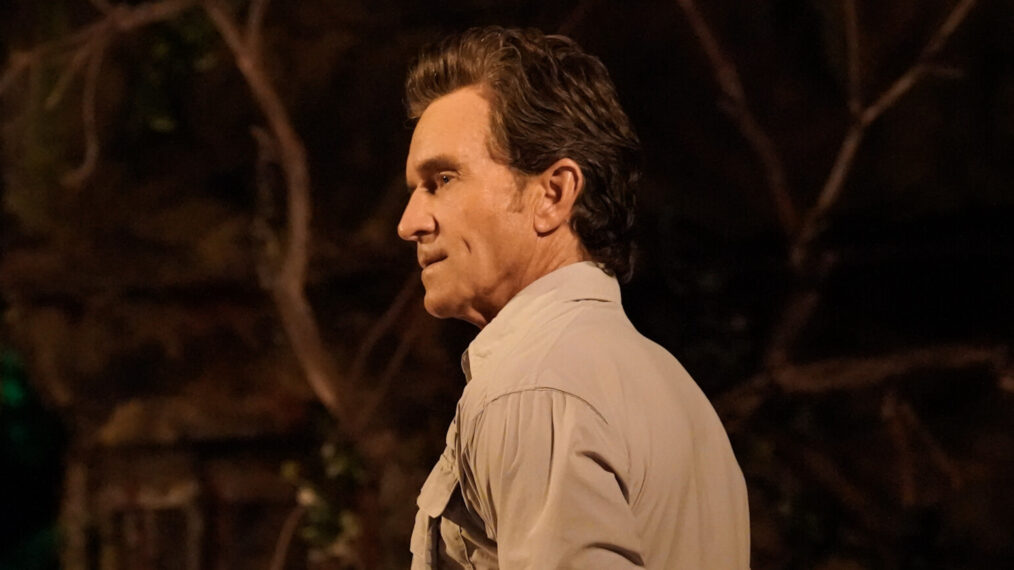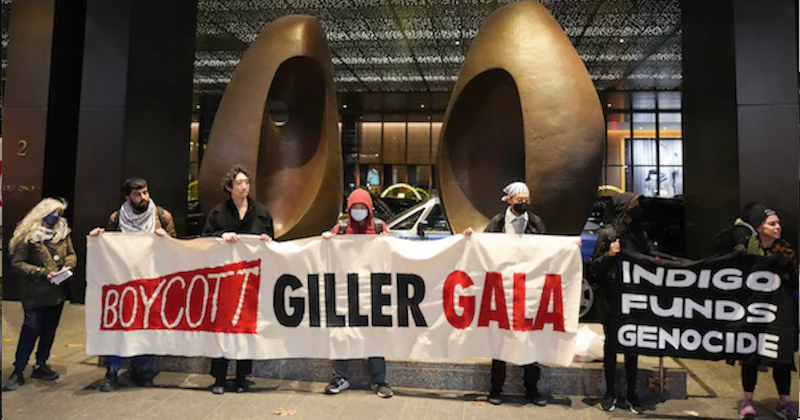Patricia Highsmith’s second novel, The Price of Salt, broke with convention by depicting a lesbian relationship that defied the stereotypes of the time, not least by ending with the promise of fulfilment, not moral condemnation, misery or death. Published in 1952 under the pseudonym Claire Morgan, it was reissued in 1990 with the now more widely recognized title Carol; only then did Highsmith acknowledge authorship. While it was the writer’s sole completed “girls’ book,” as she referred to her lesbian novels, the semi-autobiographical work occupies a crucial position amply justified in Eva Vitija’s intimate documentary, Loving Highsmith.
Acquired for North America by Zeitgeist Films and Kino Lorber, the Swiss-German production is scheduled for a September theatrical release. It focuses extensively on Highsmith’s sexuality and relationships with women, shedding light on her double life and eventual choice of solitude while subtly suggesting how those experiences resonated through her celebrated prose.
Loving Highsmith
The Bottom Line
As multilayered as one of the author’s own plots.
Revealing excerpts of that prose — from her fiction, as well as diary and notebook entries, all written in a tersely descriptive style that marks it as the work of the same hand — are read with cool authority by Gwendoline Christie. This gives the illusion of Highsmith speaking to us directly, making the film feel remarkably personal.
Vitija was drawn first to the author’s novels, with their cinematic plots that have made them fertile sources for screen adaptation. But it was only after reading her diaries that she fell in love with Highsmith the complicated woman.
Initially, I flinched at the filmmaker abruptly inserting herself into the narrative — so often a red flag in documentary — though Vitija’s voice remains a useful guide as she tracks down women that Highsmith loved and places that helped shape her restless life. “I am the forever-seeking,” says the writer, a self-definition borne out by her frequent relocation once it became clear that freedom to be herself would be difficult in her native America.
Many of us who have devoured Highsmith’s novels and the movies based on them are familiar with her incisive grasp of character, her devilish eye for flavorsome detail and her uncanny ability to make us identify with even the most morally dubious protagonists. But insights into the writer herself are generally more limited.
Vitija’s film explores illuminating chapters concerning her childhood; her hunger for the love of an emotionally remote mother; and the paradox of being a strikingly attractive woman, much desired in the lesbian bars of 1950s New York and yet compelled to remain in the shadows. One of the most lingering takeaways is the melancholy suggestion of internalized self-loathing, fed by a mother who was harshly critical of her masculine wardrobe choices, asking, “Why don’t you dress like a woman?”
Highsmith says her character was formed during her first six years. Her mother, Mary, who divorced Patricia’s father nine days before her birth, left her in Fort Worth, Texas, with her grandmother, while she moved to New York City with Patricia’s stepfather, Stanley Highsmith. By her own admission, Mary drank turpentine in a failed attempt at abortion, an option that Patricia’s father allegedly had also encouraged.
Vitija speaks at length with relatives from Texas on her mother’s side of the family, who confirm that they seldom saw Patricia and Mary together. Sorting through photo albums, they also reveal the extent to which ranching and rodeos were a part of the family’s lives. Even after Patricia became a successful novelist, her fame was eclipsed in Texas by her cousin Dan’s career as a radio rodeo announcer.
The visual motif of rodeo riders and the evocative use of acoustic guitar in Noël Akchoté’s score hint at the extent to which cowboy culture influenced Highsmith’s personal style while simultaneously distancing her. She was more responsive to New York, even if her mother’s constant efforts to override her lack of interest in boys by setting her up on dates or later lining up potential husbands became oppressive.
“It’s like falling into a bucket of oysters,” was how she described the goodnight kisses she was forced to endure at 16 from one mother-approved boyfriend at the end of dining-and-dancing evenings. “Sexual intercourse for me is like steel wool in the face,” she later wrote of her experiences with men. Still, guilt clouded her feelings and she saw doctors in an attempt to change to please her mother. Those conflicted feelings may have also been responsible for her preference for male protagonists in her fiction, with the notable exception of Carol.
Vitija weaves in well-chosen clips from four key Highsmith movie adaptations, in each case tracing the specific inspiration. For her debut novel, Strangers on a Train, it was the idea of two men exchanging murders. That book and the classic Hitchcock screen version — excerpted here with the chilling scene in which Robert Walker’s Bruno tails his prey on an amusement park ride before strangling her — got Highsmith categorized as a mystery writer, which she found reductive.
The spark for The Price of Salt was more personal — locking eyes while she was working at a department store with an attractive woman customer that she never saw again. A scene with Cate Blanchett and Rooney Mara in Todd Haynes’ Carol illustrates how Highsmith would spin out the hypnotic spell of that encounter.
Tom Ripley, who one of Highsmith’s former lovers describes as the author’s alter ego, began as a man she watched walking alone on a beach, looking troubled, very early one morning in Positano, Italy. She never spoke with him, but it’s a thrilling example of the fiction writer’s imagination to watch that sighting take shape as Matt Damon in Anthony Minghella’s The Talented Mr. Ripley, trying on various personalities for size. The violent scene in which he kills Jude Law’s Dickie Greenleaf remains startling.
The idea of the double life in Ripley — the conflicting desires, the masculine/feminine sides, the indifference to conventional norms of guilt — clearly intrigued Highsmith. The German actress Tabea Blumenschein — the inspiration for the fourth Ripley novel, The Boy Who Followed Ripley, who devastated Highsmith when she declined to move with her to France after their affair — points to the writer’s fascination with the hermaphroditic nature of snails as a parallel: “She liked people who were a bit half-and-half.”
The third book in the series, Ripley’s Game, inspired Wim Wenders’ The American Friend; a clip of Dennis Hopper in the title role contemplating his identity crisis (“I know less and less about who I am or who anybody else is”) seems to reflect Highsmith’s unsettled state.
On the more directly personal front, Vitija includes lengthy interviews with three of Highsmith’s surviving lovers. In addition to Blumenschein, who speaks entertainingly of the queer bar scene in Berlin, American writer Marijane Meaker provides perspective on the liberating process for Highsmith of writing about lesbian life in The Price of Salt, even if getting it published was a challenge.
Meaker and Highsmith (and five cats) moved to rural Pennsylvania at a time when two women living together was more likely to be assumed to be an economic necessity than a romantic union. Highsmith’s habit of starting the day with gin and orange juice caused her partner consternation (“She is afraid of my drinking, I am afraid of her temper,” Highsmith wrote), but the deal-breaker in their relationship perhaps was Meaker sneaking a look at her diaries.
Highsmith’s travels through Europe initially were driven by a wish to be outside the U.S. when The Price of Salt was published, despite the relative anonymity of a pseudonym. But the continent soon proved to be a better fit for her in many ways. France, especially, yielded some tranquility in a period of residence in the village of Montcourt, in a lovely old house with a garden that kept her occupied. Her erstwhile lover Monique Buffet talks of women being in awe of Highsmith in the lesbian bars of Paris. “A sexual love can become a religion,” Highsmith writes of those years.
More intense but ultimately more unhappy was her relationship with a married British woman, since deceased, identified here only as “Caroline.” Highsmith bought a house in England to be near her, but Caroline proved to be more convention-bound than the writer had anticipated, and the relationship took a sadistic turn. “The very worst time of my entire life,” is how she describes its painful dissolution, with the rejection echoing what she had felt from her mother. That breakup forged her resolve never to live with anyone again.
The loneliness of Highsmith’s later years in Switzerland, where she died in 1995, is evident in confessions such as “Writing, of course, is a substitute for the life I cannot live, am unable to live.” But one small weakness of the documentary is the perfunctory way in which Vitija touches on the bitterness, the racism and anti-Semitism that crept back into Highsmith’s notebooks toward the end. The filmmaker calls it a return to the intolerance she learned from her Texan grandmother, though it’s unclear to what extent those prejudices were always there.
Perhaps the real achievement of Loving Highsmith though is the degree of access it provides to the inner life of a famously guarded woman, who described being interviewed as a “profound indignity.” “I carry old memories around like a heavy suitcase,” she writes. In its fine balance of emotional and intellectual curiosity, and its elegant assembly of a rich archive of home movies, photographs and interviews, this film unpacks those memories with beguiling candor.
























































